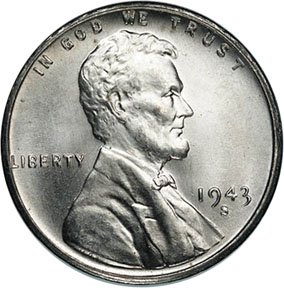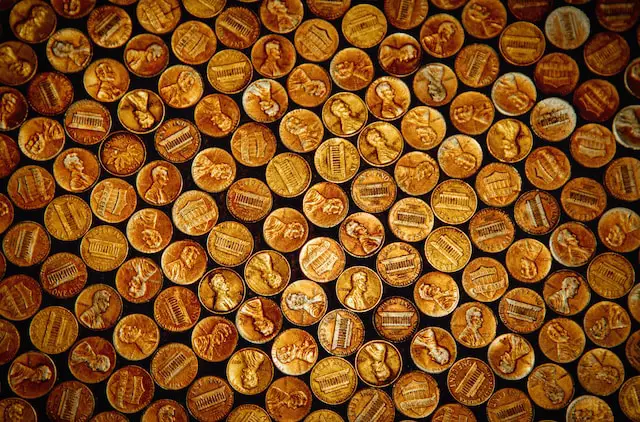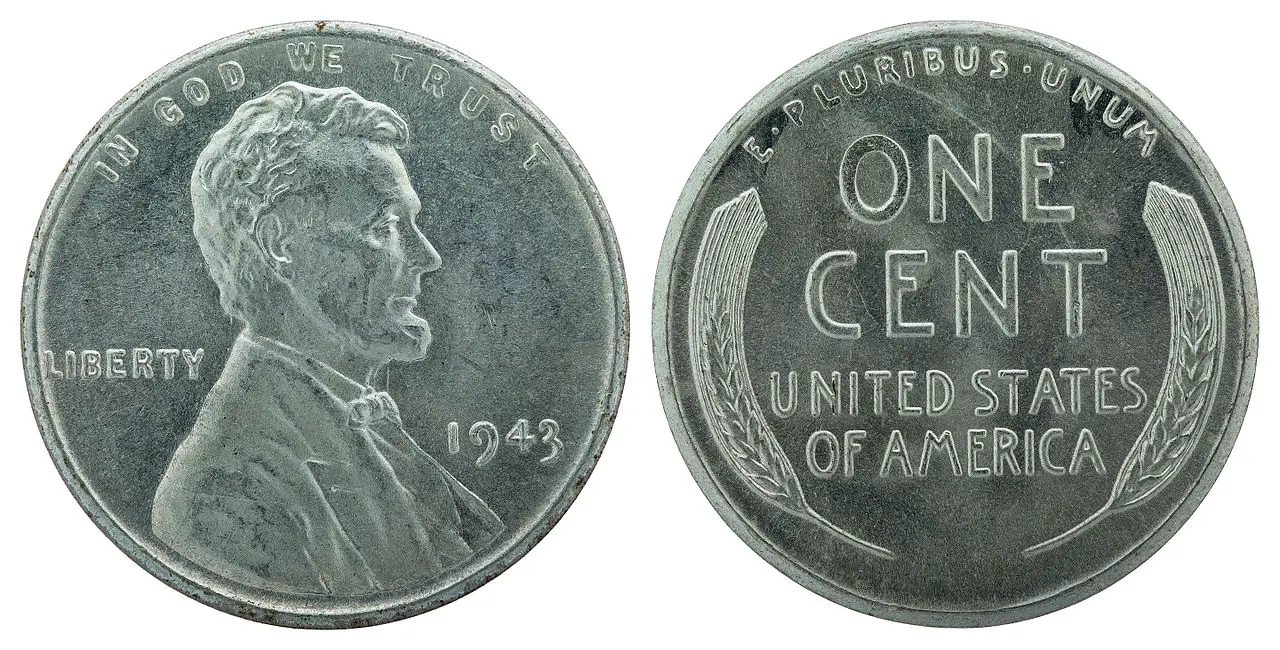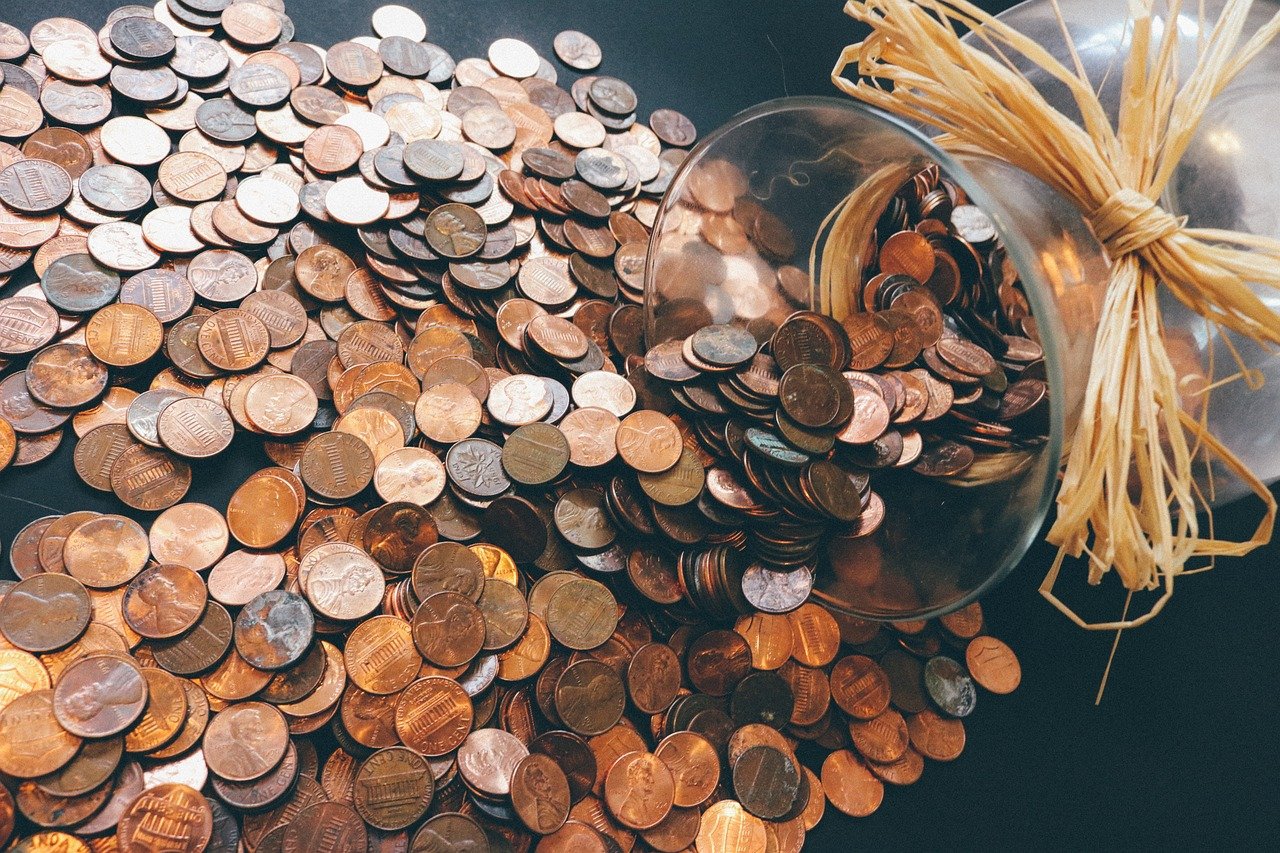The 1943 wheat penny is more than just a coin; it’s a piece of history, a collector’s dream, and a symbol of a nation’s resilience during wartime. This article explores the three distinct variations of this iconic coin: the 1943 Steel Wheat Penny, the 1943 Copper Wheat Penny, and the rare 1943-D Steel Penny.
Table of Contents
The Historical Background of the Wheat Penny
The wheat penny, officially known as the Lincoln Wheat Cent, was first minted in 1909 to commemorate Abraham Lincoln’s 100th birthday. The reverse side featured two stalks of wheat, symbolizing prosperity and agricultural heritage. This design lasted until 1958, making it one of the longest-running coin designs in U.S. history.
Impact of World War II on Coinage
World War II had a profound impact on U.S. coinage. The need for copper in ammunition and other military equipment led to the decision to strike the 1943 pennies in steel. This wartime necessity created a unique chapter in American numismatics, reflecting the nation’s commitment to the war effort.
The 1943 Copper Wheat Penny
Historical Context
In 1943, the U.S. Mint was supposed to strike pennies in steel, conserving copper for war efforts. However, a few copper pennies were minted by mistake, creating a rare and valuable error coin.
- Year: 1943
- Mint Mark: No mint mark
- Coin Type: Copper Wheat Penny
- Price Range: $60,047.00 – $250,000.00+
- Face Value: 0.01 USD
- Edge: Smooth
Value Estimation
- Average Condition: $60,047.00
- Mint State: Around $250,000.00
- Last updated: May 30, 2023
Physical Characteristics
The coin’s physical characteristics are essential for identification and valuation.
- Average Circulated (AC) condition worth around $60,047.00.
- Certified mint state (MS+) could bring as much as $250,000 at auction.
Warning About Fakes
Many 1943 Copper Pennies are fakes. Verification methods include:
- Checking for filed-down numbers from 1948.
- Using a magnet to test the metallic composition.
- Consulting with experts for authentication.Many 1943 Copper Pennies are counterfeits. Here are some methods to verify their authenticity:
- Check for filed-down numbers from 1948. Counterfeiters may file down the “1948” on a 1948-D copper penny and replace it with “1943.”
- Use a magnet to test the metallic composition. A 1943 copper penny is made of 95% copper and 5% zinc, while a counterfeit is likely made of zinc-plated steel.
- Consult with experts for authentication. If you are unsure whether a penny is authentic, consult with a coin expert or a reputable coin grading service.
The 1943 Steel Wheat Penny

Determining Rarity
The rarity of a 1943 steel penny can be determined through various methods:
- Magnet Test: If the penny is magnetic, it is made of steel coated with zinc. Steel pennies are much rarer than copper pennies.
- Counterfeit Detection: Consult an expert to determine if the penny is authentic. Counterfeit pennies are often made of poor quality materials and may have other defects.
- Sanded Edge Detection: Check for modified coins from 1948. In 1948, the United States Mint switched back to making pennies out of copper. Some people have modified 1948 copper pennies by sanding down the edges to make them look like steel pennies.
It is important to note that not all 1943 steel pennies are valuable. Only a small number of them are in good condition and have been certified by a professional grading service.
1943 Wheat Penny Value and Specific Types Of 1943 Steel Wheat Pennies
The value of a 1943 steel wheat penny depends on its condition and type. A circulated 1943 steel wheat penny is worth 10 to 13 cents, while an uncirculated 1943 steel wheat penny is worth 50 cents or more. A 1943 steel wheat penny with no mint mark is worth an average of 45 cents, but can be worth up to $10 in mint state. A 1943-D steel penny is worth $0.34 in average condition and can be worth $3.38 to $11 or more in Uncirculated (MS+) Mint Condition. The value of a 1943 steel wheat penny can also be affected by its rarity, condition, and the presence of any errors.
Errors and Variations Of the 1943 Steel Wheat Penny
Collectors often seek unique errors and variations in coins, as these can be worth significantly more than their regular counterparts. Some of the most valuable errors include:
- Off-center strikes: These occur when the coin is not struck in the center of the die, resulting in a coin that is misaligned. Off-center strikes can be worth anywhere from $50 to $500, depending on the severity of the error.
- Double dies: These occur when the coin is struck twice, resulting in a coin with two images on it. Double dies can be worth hundreds or even thousands of dollars, depending on the rarity of the error.
- Weak strikes: These occur when the coin is not struck with enough force, resulting in a coin with a faint image. Weak strikes can be worth up to $100 if in good condition.
It is important to note that the value of a coin with an error can vary depending on a number of factors, including the severity of the error, the rarity of the error, and the condition of the coin.
Selling Options For 1943 Wheat Pennies
Choosing the right selling option is crucial when selling your coins. Here are some things to consider:
- Local coin dealer: A local coin dealer may be convenient, but they may not offer the best price. They may also be more likely to low-ball you if they know you are not an expert in coin collecting.
- Online: There are many websites that deal in coins, and this can be a great way to reach a wider audience. However, it is important to do your research and compare prices before selling your coins online.
- Direct to collector: Selling your coins directly to a collector can potentially get you the best price, but it can also be more time-consuming and difficult. You will need to find a collector who is interested in the coins you are selling, and you will need to negotiate a price.
Ultimately, the best-selling option for you will depend on your individual circumstances. Consider the factors above and choose the option that is best for you.
The 1943-D Steel Penny
This rare variation, containing a repunched mintmark, can fetch up to $100 to $400, depending on its condition. A repunched mintmark is a coin struck twice, with the second strike partially obliterating the first. This can happen when the mintmark die is not properly aligned or when the coin is struck too quickly. Repunched mintmarks are considered to be errors, and they can be very valuable to collectors. The value of a repunched mintmark coin depends on several factors, including the rarity of the error, the condition of the coin, and the demand for it by collectors. In general, repunched mintmark coins can sell for anywhere from $100 to $400, or even more, depending on the factors mentioned above.
Collecting Tips and Resources
For those interested in collecting the 1943 wheat penny, here are some tips and resources:
- Authentication: Consult reputable grading services like PCGS or NGC.
- Preservation: Store coins in acid-free holders to prevent damage.
- Research: Utilize numismatic books, websites, and forums for information.
- Networking: Join coin clubs or online communities to connect with other collectors.
Notable Sales and Auctions Of 1943 Pennies
The 1943 wheat penny has made headlines in various sales and auctions:
- A 1943 copper penny sold for $1.7 million in 2010.
- A 1943-D bronze cent was auctioned for $1.18 million in 2017.
These sales highlight the coin’s rarity and the excitement it generates in the collecting community.
Legal Considerations
While collecting the 1943 wheat penny is legal, it’s essential to be aware of potential legal considerations:
Counterfeit Detection: Selling counterfeit coins is illegal, so authenticity verification is crucial. There are a few ways to verify the authenticity of a 1943 wheat penny:
Examine the coin closely for any signs of wear or damage. Counterfeit coins are often made with inferior materials and will not have the same level of detail as a genuine coin.
If you are still unsure about the authenticity of a coin, you can take it to a coin dealer or a professional coin grading service for a more accurate assessment.
Trade Regulations: Comply with state and federal regulations when buying or selling these coins, especially across international borders. In the United States, it is illegal to export coins that are considered to be of numismatic value without a license from the United States Treasury Department. Additionally, some states have their own laws governing the sale of coins, so it is important to be familiar with the laws in your state before making any transactions.
It is important to note that these are just a few of the potential legal considerations that should be taken into account when collecting 1943 wheat pennies. If you have any questions about the legality of collecting or selling these coins, you should consult with an attorney.
Final Thoughts About the 1943 Wheat Penny

The 1943 wheat penny, in its various forms, represents a unique chapter in American numismatic history. Whether it’s the accidental copper penny or the intentional steel version, these coins tell a story of innovation, error, and wartime necessity. Looking for these highly sought-after pennies is a nitch area in coin collecting.
Collectors and enthusiasts must be aware of the value, authenticity, and rarity of these coins. Research, professional authentication, and careful consideration of selling options are essential for anyone interested in this remarkable piece of American history.
The 1943 wheat penny continues to be a symbol of American resilience and ingenuity, a treasure that transcends its face value, capturing the imagination of collectors and historians alike.



